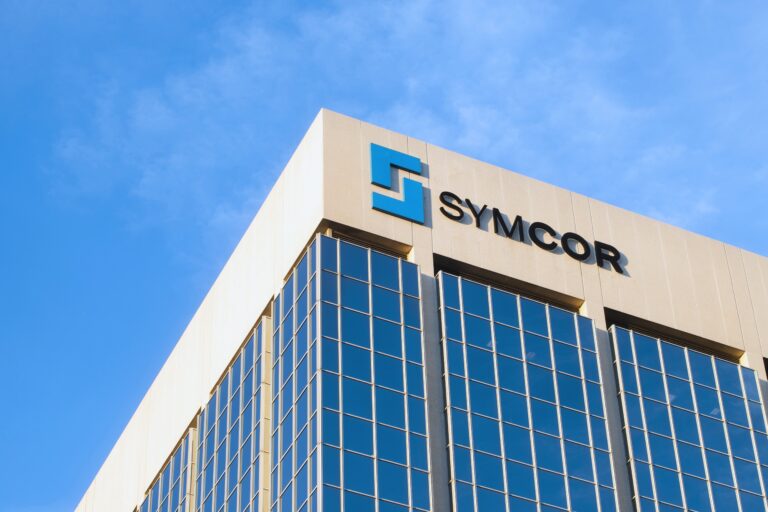
Open Banking is a globally growing financial services trend that enables financial data to be shared, with the consent of the consumer, with authorized third-party service providers (TPPs). It is intended to be a more secure framework for data sharing through secure channels such as Application Programming Interfaces (APIs), moving away from current data sharing methods such as screen scraping and credential sharing.
 Canada remains behind other developed economies in implementing an Open Banking system, and stakeholders continue to provide feedback to a consultation paper release by The Department of Finance Canada earlier in the year with consensus yet to be reached.
Canada remains behind other developed economies in implementing an Open Banking system, and stakeholders continue to provide feedback to a consultation paper release by The Department of Finance Canada earlier in the year with consensus yet to be reached.
Fintech.ca sat down with Saba Shariff, SVP Chief Strategy, Product & Innovation Officer at Symcor, to discuss her vision for a Canadian Open Banking ecosystem, the roles and opportunities for participants, and Symcor’s view on the benefits of a “hybrid” model.
To start us off, can you tell us what an Open Banking “ecosystem” is? Who are the participants and what are their roles?
SS: There are four main participants in the Canadian Open Banking ecosystem, which fall into the following categories: Data Providers (businesses with access to consumer financial data), Data Recipients (third parties seeking to use consumer financial data – with consumer’s consent – to provide services), Government and Consumers (which include small and medium-sized businesses).
The challenge is to have all these participants work together to provide a seamless experience even though each participant has different abilities and drivers.
We like to think of Open Banking as an “ecosystem” because it is an interactive, interconnected, evolving space with participants who play different roles. To support these groups in working alongside and with each other, Symcor provides a data platform that leverages standards for APIs (Application Programming Interfaces) and UX (User Experience), serving as a connector between Data Providers and Data Recipients, to help accelerate Open Banking readiness. By promoting transparency and interoperability, Symcor enables a scalable and efficient Open Banking implementation.
Ultimately, the Open Banking ecosystem should have the Canadian consumer at front of mind, with processes and structures that enable convenience, lack of friction and most importantly, trust in the security of the entire ecosystem.
Canada seems to be behind other markets when it comes to implementing Open Banking – what are your thoughts as to why that is and what we can learn from other countries’ experiences?
SS: While Canada is behind peer economies on Open Banking, we share the desire for Open Banking to launch in this country. One advantage of being a “late adopter” is that we can learn from mistakes in other countries and avoid replicating them because there is no “one size fits all” solution.
Open Banking implementations in other markets have certainly provided many lessons that Canada should consider. One of the key findings, especially seen in Europe and Australia’s early implementations, shows that overly stringent rules can slow down innovation. For example, Australia’s Consumer Data Right took learnings from the revised Payment Services Directive (PSD2) due to their own low adoption rates and have now relaxed Open Banking standards/mandates with the goal of increasing adoption and encouraging competition through new versions of accreditation guidelines. Therefore, the right mix of regulatory oversight and industry collaboration will provide the potential to advance adoption of Open Banking in Canada.
Symcor is working with participants across the ecosystem in various ways to help accelerate Open Banking readiness. We have built a platform designed for interoperability which enables secure, API-based exchange of data leveraging FDX standards. Financial institutions and fintechs can access our sandbox environment to integrate, test and provide real-world feedback on our suite of solutions.
We feel that Canada is on the right path in taking a collaborative and thoughtful approach that makes sense for each Open Banking participant — one that leverages the best of government and industry to ultimately deliver the best outcome for the Canadian consumer.
What are the main considerations of consumers and businesses in a fledgling Open Banking system?
SS: Open Banking has the ability to reduce friction in customer experiences, maintain and enhance data security, and enable a broader spectrum of innovative services for end consumers.
Some of the major considerations involve the substantial amount of time and effort required to construct common technical standards and protocols for data transfer, to streamline interorganizational processes and to establish frameworks for upholding the security and privacy of consumer data, including consumer data rights and consent granularity.
In our recent study conducted with EY Canada, results show that security has consistently been the most important variable in a personal banking customer’s decision to share data with their financial service provider over the past three years, for all age groups outside the 18-24-year-old cohort. Even still, security is valued only 13% less for 18-24-year-olds than for the 55+ age group, which has the highest preference for security. This reinforces the need to ensure that any future Open Banking system is trusted and built with security at its core. Trust will be earned by doing everything possible to provide security and convenience – that is what all participants must work together to deliver.
Ultimately, the ecosystem exists to serve the end user and it is crucial that the government and industry work together to create an Open Banking system that safeguards consumer data and operates efficiently and transparently within the relevant regulatory framework.
Symcor has voiced support of a “hybrid” model – what is meant by that and what role would Symcor have to play?
SS: The final report from the government’s Advisory Committee on Open Banking stated that Canada requires a hybrid, made-in-Canada approach, one that harnesses the benefits of both industry and government-led models. The government takes on the role of creating common rules around accreditation, liability, privacy and security, while the industry collaborates on the best path for implementation of those policies, resulting in the best of both worlds to enable a successful Open Banking model.
Symcor’s role is to be a facilitator in this Open Banking ecosystem. We have a track record of identifying common industry needs and servicing them with high standards of security and trust across a range of solutions for over 27 years. When it comes to Open Banking, we have spent considerable effort and time to ensure that our services deliver on interoperability, minimize friction, and facilitate streamlined, equal and secure access for data exchange, allowing all participants to capitalize on the significant opportunities available within the ecosystem.
With the current state of progress of Open Banking in Canada, what are your thoughts on the opportunities for both established participants and new entrants?
SS: There are real opportunities for all participants – established and new – when Open Banking arrives in Canada.
A hybrid model would allow for the dynamism and innovation that competition creates – that all participants might be well positioned to capitalize on.
The potential for innovation and the possibilities that Open Banking could usher in is very exciting. Other industries, such as finance and healthcare, can be brought into the same framework and see rapid innovation and positive change based on an effective Open Banking blueprint for data sharing predicated on consumer consent.
At Symcor, we aim to facilitate readiness for the delivery of this Open Banking ecosystem, and we will continually innovate and adapt to ensure equal, fair and secure access to data to provide a level playing field for all participants.



Leave a Reply